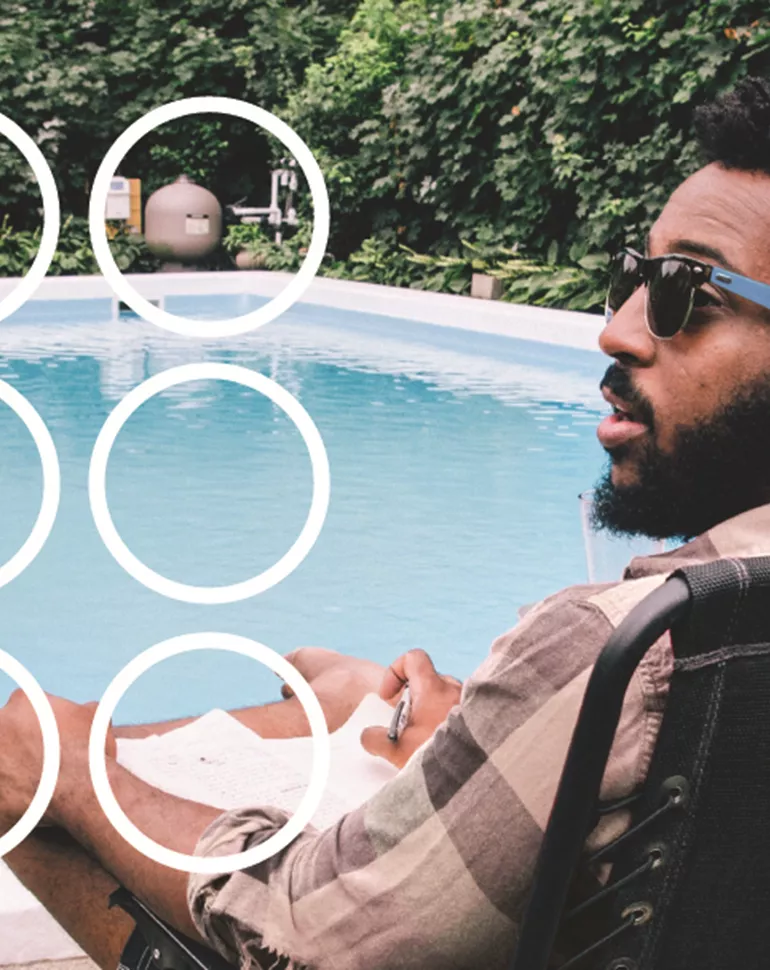Maximize the comfort and life span of your patient’s contact lenses with a premium pair of sunglasses. It’s easy to forget about the importance of eye protection — after all, they already have a pair of corrective lenses. However, their lenses won’t protect their eyes from radiation, high-energy visible light (HEV) exposure, vision problems, or injury.
As sun season approaches, patients spend more time outdoors, increasing the need for eye care and protection from HEV light. Sunwear becomes the primary pair of glasses during sun season, even for your contact wearing patients.
Every patient will see and feel the health benefits of sunglasses, especially a premium pair of sunglasses, even without the prescription.
As their eye doctor, you can give your patients eye health tips on the benefits of using sunwear, year-round.
Be clear about UV filter contact lenses
Some contacts today block up to 90 percent of UVA rays. Those without built-in filters only block 10 percent UVA and 30 percent UVB (higher energy UV rays).
Premium sunglasses block 100 percent of UV, as well as the surrounding areas. This gives contact lens wearers the protection from the sun they might not even realize they need.
Explain the extent of UV damage
It’s simple: someone wearing contacts is more exposed to the sun’s ultraviolet (UV) radiation than somebody wearing sunglasses.
But it’s not just about their eyes. We don’t often think about it, but the surrounding skin and eyelids are also exposed. This sensitive skin is more susceptible to basal cell carcinoma (BCC), the type of cancer that frequently develops on parts of the skin exposed to the sun. Contacts, unfortunately, don’t help protect those delicate areas.
Discuss HEV radiation
HEV, or “blue light,” is visible electromagnetic energy that can penetrate deep into the eye. Blue light sources are everywhere and our use of devices that emit HEV is only increasing. Common sources include the sun, fluorescent and LED lighting, and digital devices like TVs, computers, laptops, and tablets. This makes exposure more and more concerning, as it increases the risk of retinal cell damage and macular degeneration.
Some UV sunglasses or filtered contact lenses do not block blue light. Only quality sunglasses protect the eyes from this potentially harmful radiation. Ask your patient about their day-to-day activities, specifically regarding computer use and outdoor activities.
They make specialized glasses for screen time and a more durable pair for outdoor activities like running or cycling.
Empathize with dry eye discomfort
The most common complaint from contact lens wearers is dry eye. Outdoor elements like wind can cause contacts to dry out, making them very uncomfortable to wear. If your patient is active and participates in cycling, running or other outdoor sports, they may face dry contacts more often.
Patients typically end contact use because of regular discomfort. A pair of good, close-fitting sunglasses will protect their eyes and contacts from the wind. This will help their contacts last longer, and they'll avoid reverting back to eyeglasses with corrective lenses.
Talk about eye injury
Yes, contacts offer little protection against UV rays, but they also don’t protect your eyes from more direct injury. They leave eyes and the surrounding skin completely exposed and at risk.
Sunglasses with impact-resistant lenses and a durable frame would protect the eyes from injury and flying debris. A lightweight pair may be more comfortable for your inactive patients.
Hear their most common complaint
A common complaint for contact lens wearers is glare and discomfort from the sunlight, even on cloudy or hazy days. Polarized sunglasses worn over contacts will reduce the need to squint and strain their eyes.
Help them maximize the health benefits of a pair of sunglasses
Reduce eye strain, squinting, and risk of injury with a comfortable pair of quality sunglasses that fits your patients’ lifestyle.
Ask about the patient's day-to-day routine (work, hobbies, running, cycling, and environment). You'll determine the right sunglasses for them, which means a more comfortable and long-lasting experience with contact lenses.
